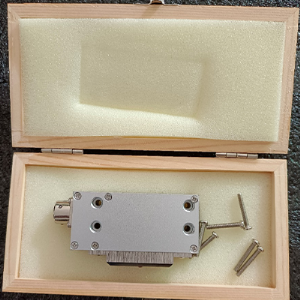Prospect and Application of Speed Sensor
outlook
According to the sensor market report, the global sensor market capacity in 2008 was 50.6 billion US dollars, and it is expected to exceed 60 billion US dollars in 2010. According to the survey, Eastern Europe, Asia Pacific and Canada have become the fastest growing regions in the sensor market, while the United States, Germany and Japan are still It is the region with the largest sensor market distribution. Globally, the fastest growing sensor market is still the automotive market, followed by the process control market, which is optimistic about the prospects of the communication market.
Some sensor markets, such as pressure sensors, temperature sensors, flow sensors, and liquid level sensors, have shown the characteristics of mature markets. Flow sensors, pressure sensors, and temperature sensors have the largest market size, accounting for 21 percent and 19 percent of the entire sensor market, respectively And 14 percent. The main growth of the sensor market comes from emerging sensors, such as wireless sensors, MEMS (micro-electromechanical system) sensors and biosensors. Among them, the compound annual growth rate of wireless sensors from 2007 to 2010 is expected to exceed 25 percent .
Entering the 21st century, the global sensor market is showing a trend of rapid growth amidst ever-changing innovations. Relevant experts pointed out that the main technologies in the sensor field will be extended and improved on the existing basis. Countries will compete to speed up the development and development of a new generation of sensors Industrialization, competition will become increasingly fierce. The development of new technologies will redefine the future sensor market, such as the emergence of new sensors such as wireless sensors, fiber optic sensors, smart sensors and metal oxide sensors and the expansion of market share.
application
Speed sensors will be used in the car detection market
Modern vehicles are generally equipped with engine control, automatic driving, ABS, TRC, automatic door locks, active suspension, guidance systems, electronic instruments and other devices, all of which require vehicle speed signals. Therefore, the accuracy and Stability will have a big impact on these control units.
Most automobile speed sensors adopt the Hall structure. The Hall speed sensor is a magnetoelectric sensor based on the Hall effect. It has high magnetic field sensitivity, stable output signal, high frequency response, strong anti-electromagnetic interference ability, and simple structure. It is easy to use and so on. It is mainly composed of permanent magnets with specific pole pairs (generally 4 or 8 pairs), Hall elements, rotating mechanisms and input\/output plug-ins. Its working principle is that when the rotating mechanism of the sensor is driven externally When it rotates down, it drives the permanent magnet to rotate. The magnetic field passing through the Hall element will produce periodic changes, resulting in a change in the output voltage of the Hall element. Through subsequent circuit processing, a stable pulse voltage signal is formed as the output signal of the vehicle speed sensor. The main electrical technical parameters of the structure speed sensor include: output signal high voltage, low voltage, duty cycle, cycle, rise time, fall time, number of cycle pulses, etc. In order to ensure the performance and reliability of the product, these parameters must be checked before leaving the factory. Quantitative testing.
speed sensor
Integrated, intelligent, efficient automatic measurement, software calculation, graphic or digital instrument display of test results are more and more favored by automobile speed sensor manufacturers. A comprehensive detection method for measuring the performance of ordinary Hall speed sensors has been developed Device. Based on cost considerations, the high-speed counter port of the microprocessor is used as the data acquisition of the vehicle speed sensor, and software control is used to calculate and display the collected data. The completed detection device has high test accuracy, reliable data communication, and graphical user interface. Good, strong anti-interference ability, simple and intuitive detection process, low system development cost and other advantages. It has a good market promotion. Therefore, the speed sensor has broad application prospects in vehicle speed detection.
The belt conveyor speed sensor adopts Hall sensor, which mainly uses Hall effect to realize magnetoelectric conversion. Hall effect has been developed for more than 100 years since it was discovered in 1879, but due to the rapid development of microelectronic technology, its application in In the 1950s, it was valued and promoted, and various Hall elements were continuously developed. Since the 1970s, my country has increased the research on hall elements. After decades of research and development, it has been able to produce various performance hall elements. Hall elements, such as ordinary type, high sensitivity type, low temperature coefficient type, temperature and magnetic measurement type, switch type Hall element, etc. Hall sensor has the characteristics of high sensitivity, good linearity, high stability, small size, high temperature resistance, etc. , has been widely used in non-electrical measurement automatic control, computer equipment, modern military technology and other industrial fields.


